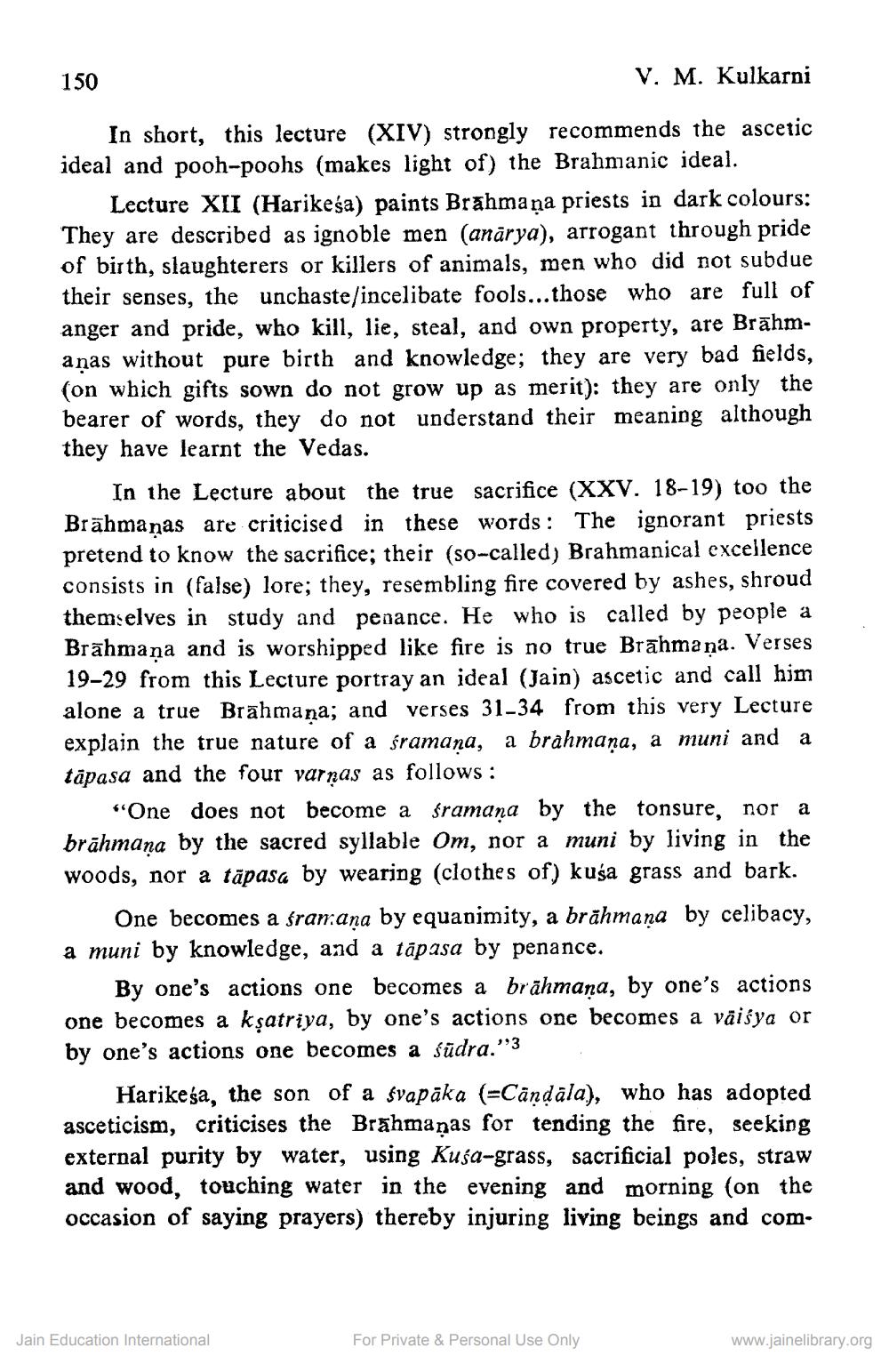________________
150
V. M. Kulkarni
In short, this lecture (XIV) strongly recommends the ascetic ideal and pooh-poohs (makes light of) the Brahmanic ideal.
Lecture XII (Harikeśa) paints Brahmana priests in dark colours: They are described as ignoble men (anārya), arrogant through pride of birth, slaughterers or killers of animals, men who did not subdue their senses, the unchaste/incelibate fools...those who are full of anger and pride, who kill, lie, steal, and own property, are Brāhmaņas without pure birth and knowledge; they are very bad fields, (on which gifts sown do not grow up as merit): they are only the bearer of words, they do not understand their meaning although they have learnt the Vedas.
In the Lecture about the true sacrifice (XXV. 18-19) too the Brāhmaṇas are criticised in these words: The ignorant priests pretend to know the sacrifice; their (so-called) Brahmanical excellence consists in (false) lore; they, resembling fire covered by ashes, shroud themselves in study and penance. He who is called by people a Brāhmaṇa and is worshipped like fire is no true Brāhmaṇa. Verses 19-29 from this Lecture portray an ideal (Jain) ascetic and call him alone a true Brahmana; and verses 31-34 from this very Lecture explain the true nature of a śramana, a brahmana, a muni and a tāpasa and the four varņas as follows:
“One does not become a sramana by the tonsure, nor a brāhmana by the sacred syllable Om, nor a muni by living in the woods, nor a tāpasa by wearing (clothes of) kuģa grass and bark.
One becomes a śramaņa by equanimity, a brāhmaṇa by celibacy, a muni by knowledge, and a tāpasa by penance.
By one's actions one becomes a brāhmana, by one's actions one becomes a kșatriya, by one's actions one becomes a väisya or by one's actions one becomes a sūdra.”3
Harikeśa, the son of a svapāka (=Cāņdāla), who has adopted asceticism, criticises the Brāhmaṇas for tending the fire, seeking external purity by water, using Kuša-grass, sacrificial poles, straw and wood, touching water in the evening and morning (on the occasion of saying prayers) thereby injuring living beings and com.
Jain Education International
For Private & Personal Use Only
www.jainelibrary.org




